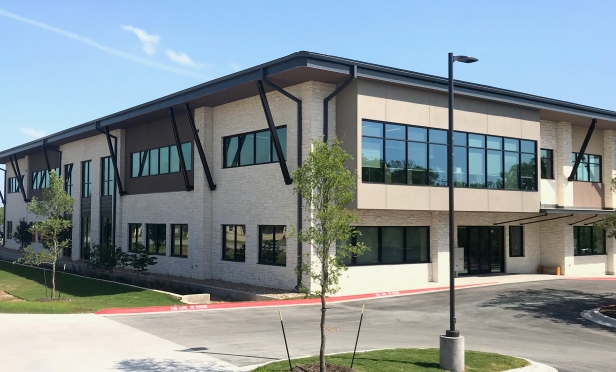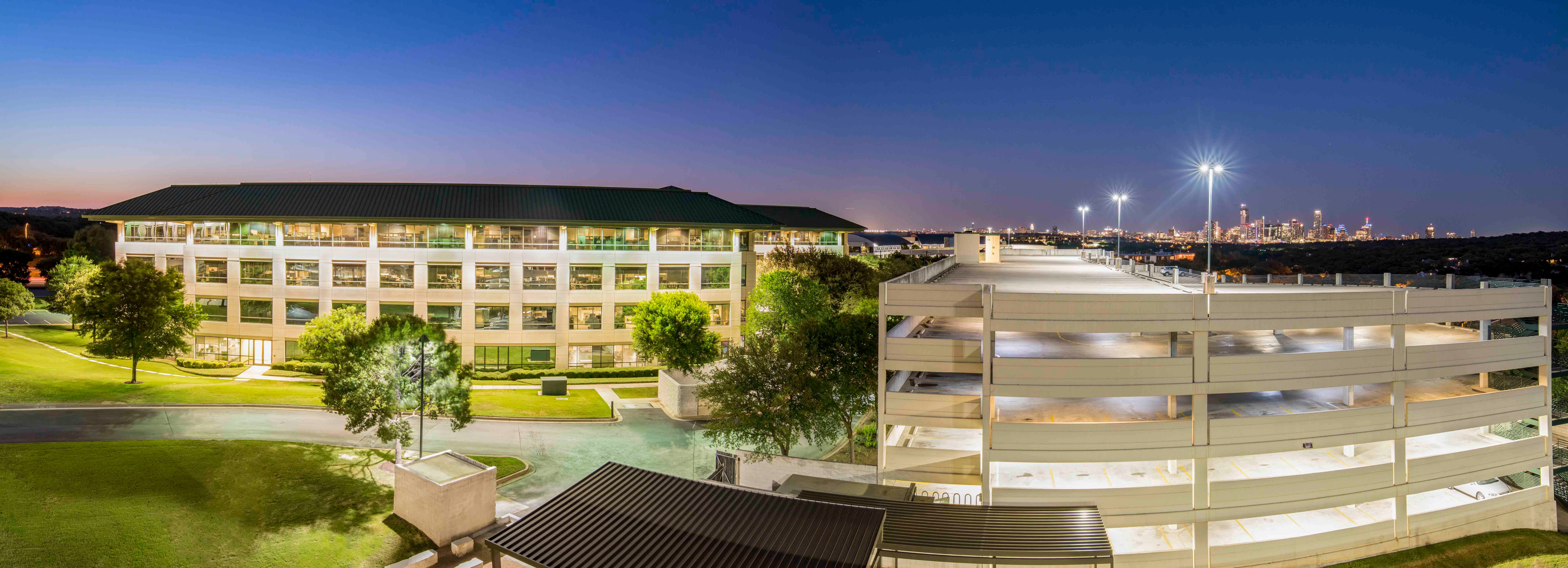 MedProperties closed on the acquisition of a 27,554-square-foot MOB in Dripping Springs, TX.
MedProperties closed on the acquisition of a 27,554-square-foot MOB in Dripping Springs, TX.
AUSTIN, TX—While an elderly population can be one of the factors that drive the need for healthcare, it is by no means the only driver. A growing population of any age also drives increased demand for healthcare.
Due to a strong healthcare infrastructure and fast-growing population, MedProperties Realty Advisors LLC has strengthened its commitment to the Austin market. The firm expanded its presence there by investing in three medical office buildings.
Together with the February 2018 acquisition of the 32,987 square foot Lakeside Professional Building in the Austin suburb of Bastrop, the three additional recent acquisitions bring its holdings in the area to four MOBs totaling more than 120,000 square feet.
MedProperties closed in June on the ground-up development of a two-story 40,000-square-foot medical complex in Lakeway, about 21 miles northwest of Austin. The transaction is a joint venture with Equity LLC, an Ohio-based developer, owner and operator of healthcare facilities and other real estate assets with 10 regional offices including in Austin and San Antonio. Slated for completion in April 2019, the Lakeway Medical Village MOB is the fifth joint venture project between the two firms.
In addition, MedProperties simultaneously closed on the acquisitions of two newly developed MOBs in late July. They included a 27,554-square-foot MOB in Dripping Springs, about 23 miles west of Austin, and a 20,167-square-foot MOB in Round Rock, about 19 miles north of Austin.
“Austin is a desirable market that is dominated by strong healthcare systems such as Seton Healthcare Family, St. David's Healthcare and a growing presence of Baylor Scott & White, one of the largest health systems in the country,” notes Darryl Freling, MedProperties managing principal. “With our acquisition in Bastrop and the three recent acquisitions, we've obtained the critical mass needed for a nice-sized portfolio in the Austin area. In addition, the Lakeway medical complex will be built on a 2.84-acre tract across the street from Baylor Scott & White's highly visible, prominent Lakeway medical center campus.”
Freling also pointed out the growing population of Austin, one of the fastest growing in the country.
“As for Austin, there is great population growth and a relatively affluent population. There are also a number of strong, healthy hospital systems in the greater Austin area,” Freling tells GlobeSt.com. “However, the Austin market is not characterized by large-sized medical office buildings, and many of the institutional investors in healthcare properties such as REITs and other large, private buyers generally want to do larger transactions. Thus, by aggregating a portfolio of MOBs in Austin, a growing, dynamic city with strong healthcare systems, we enhance the our ability to later sell these properties in four to five years by being able to offer a portfolio, and thus a larger potential transaction size, to attract all of the investment community in healthcare properties.”
He noted that Austin has been named the number one place to live in the United States, both in 2017 and 2018, and that the 2016 median household income in the area was $71,000, $13,383 greater than the US median household income. Austin is also the 11th largest US city and the home of the flagship campus of the University of Texas system. It also boasts a well-known music scene and has a rapid influx of technology companies.
MedProperties managing principal Roman J. Kupchynsky says that another benefit of the Austin-area acquisitions is the favorable purchase price. He says that MedProperties acquired the Round Rock and Dripping Springs properties on an off-market basis at attractive prices.
Kupchynsky says the three acquisitions also have strong tenancy. The Dripping Springs MOB's tenants include orthodontics, neurology, urology, pain management, diagnostic imaging and gastroenterology services.
“The Dripping Springs MOB is 100% leased by a strong, diverse mix of tenants with a weighted average lease term of 10 years, and the Round Rock facility is 93% leased by a variety of high-quality tenants with an average lease term of nine years,” adds Kupchynsky. “In addition, two of the tenants in the Round Rock MOB invested in the real estate through a joint venture with MedProperties, thereby benefiting the property and the tenants. But because of the facilities' ideal locations and many amenities and benefits, we believe they will generate attractive risk-adjusted value-add returns.”
Tenants at the Round Rock facility include plastic surgery, minimally invasive surgery, dental and primary care services. The three properties were added to the MedProperties Investment Partners LP Fund (Fund II). With these transactions, MedProperties has now completed its capital deployment for Fund II. MedProperties recently launched its third fund, MedProperties Fund III, and has already closed two investments into that fund.
Erik Tellefson, managing director of Capital One Healthcare, arranged debt financing for the Dripping Springs and Round Rock acquisitions. Debt for the Lakeway project's development costs is being provided by Security State Bank & Trust, and architectural design is provided by BSA LifeStructures.
The revitalization of the healthcare industry is placing medical services into the local community, providing a more patient-centered model, according to a recent report by Marcus & Millichap. The trend toward this level of care has encouraged providers to expand outpatient services into more retail-like settings, providing easier access to patients and capitalizing on strong traffic and demographic trends. Amid consolidation, major medical providers account for a large share of all leasing decisions and tend to favor properties providing more-modern amenities. Newer-vintage assets will continue to fare well, however, vacancy at outdated centers will rise amid physician retirements and hospital acquisitions.
© Touchpoint Markets, All Rights Reserved. Request academic re-use from www.copyright.com. All other uses, submit a request to [email protected]. For more inforrmation visit Asset & Logo Licensing.







